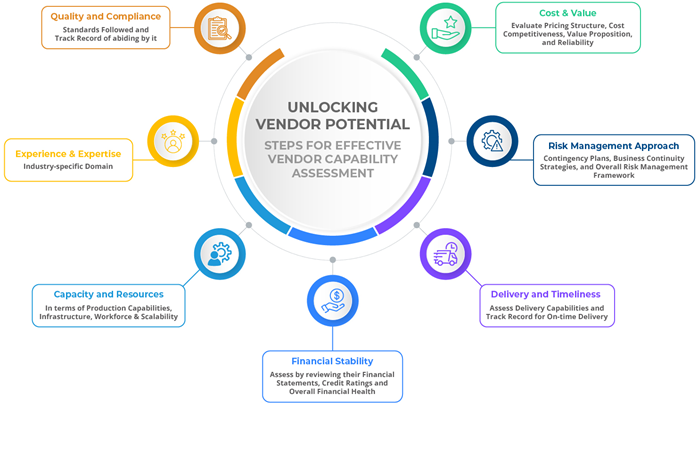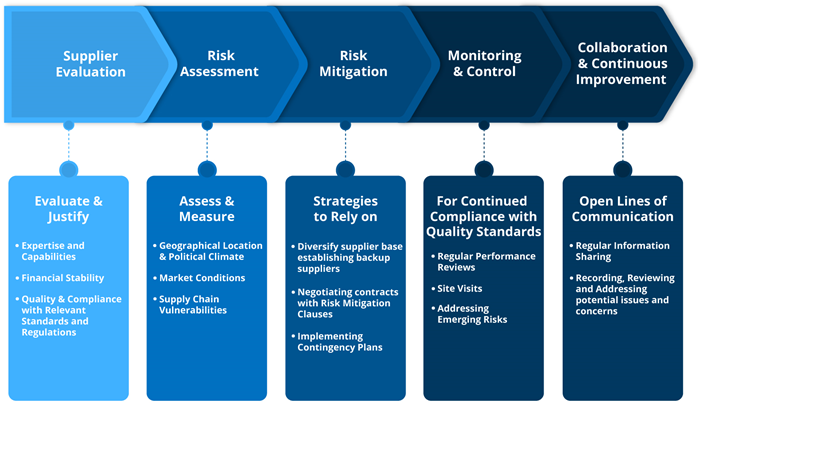Supplier Risk Management – How well are OEMs Managing Disruptions?
by Swapnil Patil (Sr. Lead - Sourcing and Costing). | Jun 15th, 2023

As technology evolves, the level of outsourcing to supplier partners has increased over time, with OEMs focusing on conceptualizing and building the vehicle, its integration, brand presence and establishing seamless customer connections. COVID-19 has exposed the vulnerabilities of global sourcing and emphasizes the need to localize as well as engage closely with suppliers as long-term business partners rather than a transactional interplay. The subsidies extended by the Government for EVs also emphasize the localization of aggregates.
Diversifying the supply chain by engaging local suppliers and building redundancy in the sourcing of critical components reduces dependence on a single source and minimises the impact of supply disruptions. A localized supplier network to source components and materials closer to the manufacturing facilities reduces supply chain vulnerabilities and minimises logistics costs.
Supplier risk management strategy is essential for automotive companies to identify, assess, and be ready to face potential risks in their supply chain. This could start with onboarding a new supplier, managing supplier collaboration, integrating supply chains, and keeping in mind the impact of natural or geopolitical disasters and any other threats to the supply chain.
Therefore, Supplier Risk Management is an end-to-end activity, beginning with assessing the technical capability of the supplier, manufacturing process and productivity of the supplier, financial strength to run the operations, sustainable quality of the product and services, and competitive pricing to support the volumes and business growth plans of the OEMs.
Managing Risks and Compliance Processes for OEMs
As OEMs are dependent on a complex supply chain that extends across the globe, market intelligence and predictive analytics are critical tools necessary to manage risks and ensure regulatory and other compliance aspects.
Supplier audits, interactions, and industry forums provide market intelligence. Industry 4.0, telematics, and other software tools help with predictive analysis at the product and process levels. The decisions we arrive at with this data model will lessen the impact of challenges and pressures the automotive supply chain causes from time to time. Any stress in the automotive supply chain will impact sourcing, extending to Logistics, Technology, Regulations, Resource Availability, Environment, etc. Data Analytics driven by AI-based logic could circumvent all these issues paving the way for seamless operations.

Action Plans by Hinduja Tech to challenge the contingencies
1.Increased frequency of financial audits with relevant questionnaires. The data obtained is compared with the declaration. By assessing the financial ratios with relevant questions, the exact position of the supply partner is evaluated
- For instance, the current ratio, if less than 1, indicates short-term liquidity and solvency issues
- Not all the time; higher revenue translates to higher profit. Hence the profitability ratio gave us insights into how the organization can generate profits out of revenue. The contribution margin is an indicator of the profit after the costs of goods sold and services provided are considered
- Understanding the liabilities of the company against its net worth gives us visibility of how well an organization leverages against financial risks
2.Continuous engagement with suppliers and developing a Risk Mitigation Plan
3.Alternate source development across commodities and technologies
4.Balance the inventory levels to have stock in place if there is an unexpected delay from the supplier
5.Ensuring positive free cash flow to the supplier, thereby ensuring smooth flow in operations across the supply chain.
Also, collecting the following information about the suppliers helps HT to comprehend their capability to ensure liquidity to meet current or short terms liabilities and their ability to sustain the business in the longer run.
1.Sources of revenue and the weightage from each of its customers. As an example, if the supplier gets 25% of the revenue from one source, it might lead to a greater risk
2.Banks / Financial Institutions backing the supplier and its reputation
3.Debts committed to the Supplier by the Lender
4.Outstanding Debt / Capital
5.Financial Structure of the Supplier
6.Future Financing Options
Suppliers play a crucial role in the sourcing and supply of components, and their selection and management are vital for a robust supply chain. In the context of electric powertrain engineering, suppliers, particularly in the EV industry, such as battery suppliers, are key partners in ensuring the availability and quality of components.
Hinduja Tech (HT) recognizes the significance of suppliers and has developed a Supplier Risk Matrix assessment sheet. This tool enables HT to assess and evaluate the strength and reliability of the supply chain. The Supplier Risk Matrix assesses various factors such as financial stability, production capacity, quality control measures, and after-sales support. By using the Supplier Risk Matrix assessment sheet, HT can effectively evaluate the risks associated with potential suppliers, identify any vulnerabilities in the supply chain, and make informed decisions in selecting and managing suppliers. This assessment helps ensure that the chosen suppliers have the capabilities, resources, and commitment to meet the sourcing needs and provide reliable components for the electric powertrain engineering projects.
By deploying the Supplier Risk Matrix assessment sheet, HT can enhance supply chain resilience, minimize potential disruptions, and foster strong partnerships with suppliers, ultimately contributing to the success of electric powertrain projects.


Why is Supplier Risk Management Critical?
The COVID-19 pandemic, geopolitical problems like the Ukraine war, climate change, natural disasters, and others have badly impacted many companies and forced them to revisit their approaches towards supplier Risk Management. For instance, the COVID-19 pandemic is a prime example of how a health crisis can disrupt supply chains on a global scale. Similarly, Ukraine, the producer of copper, an essential input to many manufactured goods and electronics, could not cope with the promised schedules. These disruptions have required companies to gather information from suppliers with Ukrainian operations and adjust their production schedules and processes accordingly. Another recent example of an unanticipated supply chain disruption was when the Suez Canal was blocked by a giant container ship for 6 days. Recently China’s continuous cyber-attack attempts in Taiwan, the major chip source for global operations, pose a threat to hinder the global supply chain in terms of the availability of chips.
It is impossible to predict pandemics, wars, or disasters far in advance, but mitigating their impact on your organization is possible. With statistical data tests, every organisation must continuously work on identifying the vulnerable parts of the supply chain and the impact it would have on revenue generation. With the results, the organizations should identify alternate sources to have a smooth flow of operations.
Our Strategic Matrix
Hinduja Tech works on the following 5*4 matrix, based on qualitative and quantitative data of any supplier, to assess the Risk in the Supply Chain.

A recommendation with a detailed action plan to mitigate the risks is offered to our customers.
Our Supplier Management Strategy brings the following benefits
1.Lower Supplier / Sourcing Costs – 14%-38% Reduction achieved
2.Reduced Supplier Risk
3.Improved Competitive Position in the Market
4.Increased Operational or Financial Efficiencies
5.Transparency in Escalation
6.Early Detection of Risk
7.Ability to Respond to Contingencies
8.Ensuring Compliance
9.Avoid Fines and Penalties.
Conclusion
The automotive industry has complex supply chains that involve multiple tiers of suppliers, making it difficult to track and manage risks. This complexity increases the likelihood of risks and results in quality issues, delivery delays, or disruptions due to natural disasters or geopolitical events.
Partnering with Hinduja Tech brings OEMs the benefit of multiple supplier relationships to manage the growing demands of the automotive industry in an efficient way. With its 700+ auto-specific supplier ecosystem, Hinduja Tech can help mitigate risk & losses due to supplier breaches and noncompliance. This also involves developing contingency plans to manage disruptions in the supply chain.


.png)
.png)

